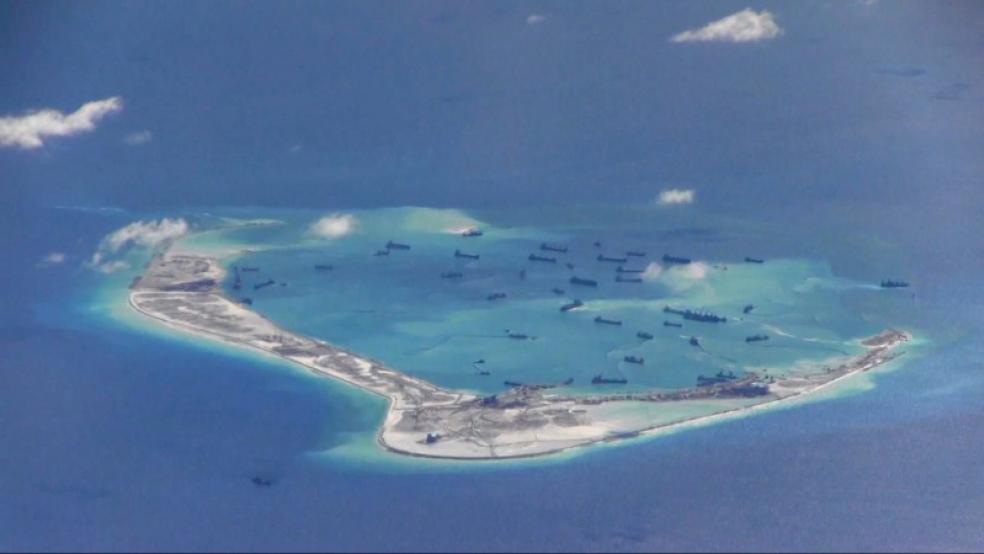Amid new reports that China is constructing structures that may be able to house long-range missiles on artificial islands in the South China Sea, the U.S. is flexing its naval muscle in the same waters.
Related: The US Navy’s $13 Billion Answer to China and Russia
In a story Wednesday, Reuters says it was told by two U.S. officials that China has built almost two dozen concrete structures with retractable roofs that resemble housing for surface-to-air missiles.
Reuters quoted a spokesman for the Chinese Foreign Ministry as saying, "China carrying out normal construction activities on its own territory, including deploying necessary and appropriate territorial defense facilities, is a normal right under international law for sovereign nations."
The structures, about 60 feet long and 30 feet high, have been erected on artificial islands built on reefs in the Spratly Islands, where military-grade airstrips have already been installed, Reuters said. The islands are more than 500 miles from the Chinese mainland.
Related: The Emerging Arms Race at Sea for the US, China and Russia
Beijing may be feeling emboldened by the initial disarray of a new administration in Washington and President Trump’s early flirtation with Taiwan before backing down and endorsing the “one China” policy in the face of stern Chinese warnings.
But the U.S. military sent a signal last weekend that China shouldn’t take diplomatic missteps as a sign of weakness. A carrier strike group steamed into the South China Sea on Saturday, led by the aircraft carrier USS Carl Vinson. The Vinson and its accompanying ships are conducting “routine operations,” according to the website of the U.S. Pacific Fleet.
About $5 trillion in trade passes through the South China Sea, according to the South China Morning Post, and Southeast Asia countries dependent on the U.S. and China worry that area – parts of which are claimed by the Philippines, Vietnam, Malaysia and Brunei – will become a flashpoint in the tense relations between Beijing and Washington.
Related: China Is Ready to Step into America’s Role as World Leader
The 10-member Association of South East Asian Nations (ASEAN) is unanimous in its concern over “militarization of the region,” the Philippine Foreign Secretary told reporters, according to the Post. But he said China’s installation of weapons systems on the artificial islands was unsettling.
Last week a U.S. Navy plane and a Chinese aircraft came close to one another in the skies over the disputed waters, the paper said.
On Tuesday, spokesman Geng Shuang said in a posting on the Chinese Foreign Ministry website that while China “respects the freedom of navigation … we oppose relevant countries threatening and undermining the sovereignty and security of coastal states under the pretext of such freedom,” Stars and Stripes reported.
In a deep look at island-building in the South China Sea, The New York Times in 2015 pointed out that China is not the only country to have built artificial islands on reefs or expanded existing islands – Vietnam, Malaysia, Taiwan and the Philippines have all done so. But as a latecomer, China has done so with unprecedented speed and scale.





